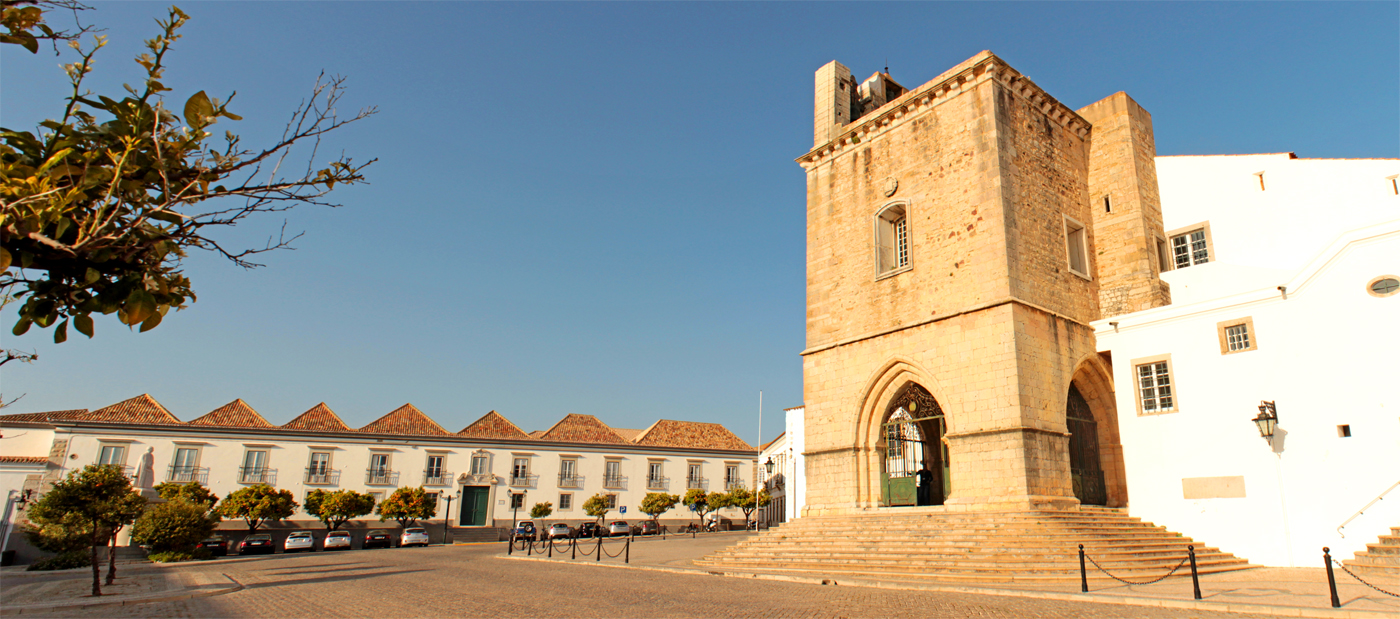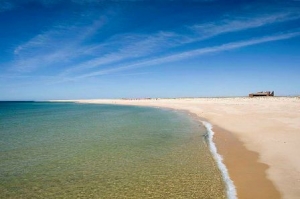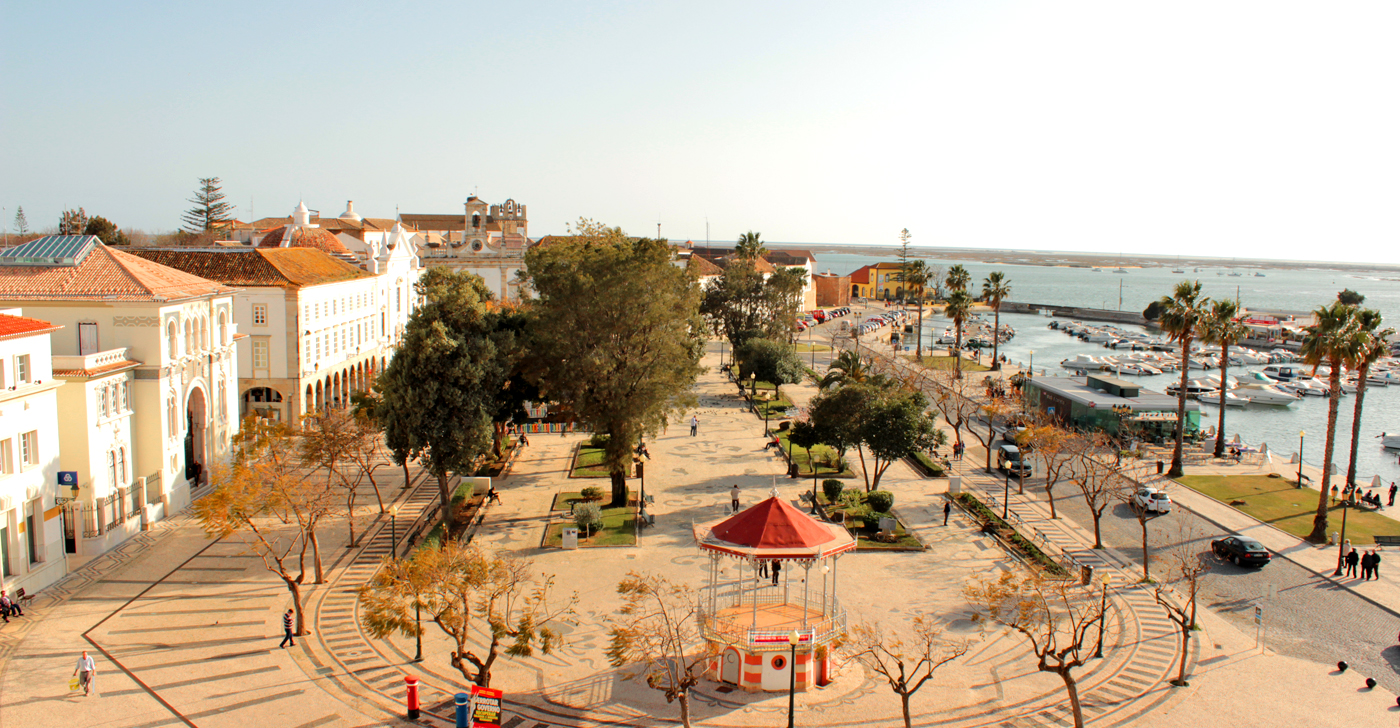
Igreja do Carmo church is a fine example of Baroque architecture, with its flamboyant gilded woodcarvings and beautifully painted Portuguese tiles. However, if you really want to see something completely different, look no further than behind this same church – there, you’ll discover a macabre little chapel made out of human tibias and skulls. Rather emphatically, monks enshrined their sanctified skeletons for us to visualize how ephemeral worldly life actually is. You’ll get their intended message for a small admission fee.
Then, there is the quaint Old Town, a defensive perimeter located where Faro was born about 2800 years ago. Within its high medieval walls and along its labyrinthine cobbled streets, there are restaurants and cafés, a Municipal Museum – its pleasant cloisters and Roman mosaics are worth mentioning – and, pictured above, Faro Cathedral (Sé Catedral de Faro), a building that was vandalized by Robert Devereux, 2nd Earl of Essex, back in 1596. Maybe to dissuade those wandering foreign looters, information on the rich architectural and liturgical works is not provided. You’ll see it, but you won’t quite understand it. A Baroque pipe organ, gilded woodcarvings and a wealth of opulently adorned side chapels are the main highlights. For a small fee you can also visit its bell tower, a nice viewing point over Faro and Ria Formosa. Weather and health permitting, the best way to visit the Old Town is on foot. Being a very compact place, you really do not need any kind of transportation in order to enjoy it. Just watch your steps, because the sidewalks are a bit tricky at times.
 The best beaches within Faro municipality are located in Deserta Island – meaning ‘Desert Island’, pictured right – a fairly distant place where you will find some of the warmest ocean waters in Portugal (please check Faro Map below). You need to take a small ferry boat in order to visit this long and flat stretch of sand, dunes and not much more, except birds and a few people, even during high season. The island is also known as ‘Ilha da Barreta‘. Do not forget your hat, sunglasses, sun cream and plenty of water, or else you’ll be roasted alive when air temperatures soar in the summer. The catamaran trip to the island provides a good opportunity to observe marine birds all through the meandering Ria Formosa salt marshes. There is only one restaurant in the island. Image: Animaris
The best beaches within Faro municipality are located in Deserta Island – meaning ‘Desert Island’, pictured right – a fairly distant place where you will find some of the warmest ocean waters in Portugal (please check Faro Map below). You need to take a small ferry boat in order to visit this long and flat stretch of sand, dunes and not much more, except birds and a few people, even during high season. The island is also known as ‘Ilha da Barreta‘. Do not forget your hat, sunglasses, sun cream and plenty of water, or else you’ll be roasted alive when air temperatures soar in the summer. The catamaran trip to the island provides a good opportunity to observe marine birds all through the meandering Ria Formosa salt marshes. There is only one restaurant in the island. Image: AnimarisOn the other hand, Faro Beach (‘Praia de Faro’) is easily accessible via a narrow bridge. Restaurants and bars aplenty are scattered along the wide beachfront. However, its built environment needs to address some difficulties concerning urban planning, accessibility and landscape architecture. Throughout July and August, especially on weekends, the island becomes busy and overcrowded. For quieter beach settings, there are much better alternatives nearby (please check bottom of the São Lourenço Trail page). Faro Beach’s true advantage is the relative proximity to the city of Faro proper. The Centro Náutico (Nautical Centre) in Faro Beach is a small public institution open to all visitors, providing kayak, surf, windsurf and sailing activities. Kayak trips are a nice way to navigate solo in calm Ria Formosa. This is best done during low season, avoiding all the fast boats crisscrossing the main water channel in summer). Contact via e-mail through [email protected].
